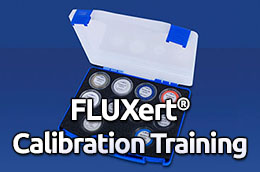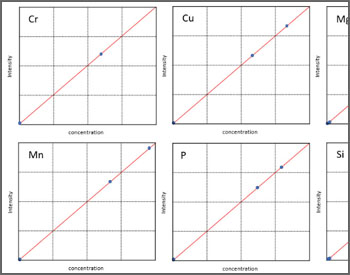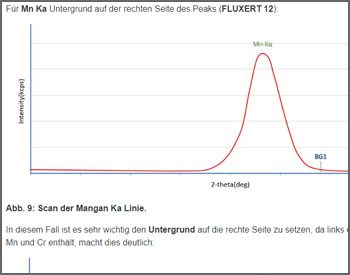
Calibration course to train calibrations.
FXEL-0014
This calibration course was created using the FluXert calibration training set. What is special about this training course is that the user can purchase this sample set and thus follow the course on his XRF spectrometer step by step. However, you can also transfer the content of the course to any other calibration task and do not necessarily have to purchase the set. However, the calibration sample set was specially developed for this course.
Please note that these are not standard samples, but simply samples that are inexpensive to manufacture, that contain the XRF elements that are interesting for the training, and that show typical faults that we need for the training.




|
The aim of this course is to teach you how to create a calibration on a wavelength dispersive X-ray fluorescence spectrometer (WDXRF). The course is as device-independent as possible, since the procedure is similar on most WDXRF devices. In order to avoid copyright infringement, the device manufacturers and the exact device names are not mentioned. We are content with the designation XRF Type1, Type2, etc. |
|---|
|
• unlimited access to this course • (with the purchase of the FluXert set): 15 calibration and monitor samples • access to the question and answers forum for further assistance • a certificate for successfully completing the course |
|---|
| You should have access to a WDXRF spectrometer and basic knowledge of X-ray fluorescence analysis (XRF). If you want to expand or refresh your knowledge of RFA, we recommend that you complete the "RFA Practical and Easy" course beforehand. |
|---|
|
|---|
 |
Dr. Rainer Schramm PhD chemist and managing director of FLUXANA® with over 25 years of experience in XRF. “In the past, calibration courses for spectrometers were very time-consuming and cost-intensive, since the device always had to be calibrated personally on site. For this reason, we have developed FluXert, a cost-effective calibration set with a suitable online course, to make calibration training more easily available. I look forward to your questions and feedback on our course." |
|---|---|
 |
Konstantin Brendgens Trained chemist and calibration expert with over 10 years of experience installing and training calibrations around the world. “The need for calibration courses for XRF has always been very high. But numerous devices and software have made it difficult for the laboratories to receive appropriate training. Therefore, I am glad that we can offer you a universal and inexpensive solution with this course. I am happy to answer any questions you may have. ” |
Access is restricted to one user, but is not limited in time.
The cost of the FluXert set with 15 calibration and monitor samples including access to the course is € 586. The set and the course can also be purchased separately for € 300 (course) and € 286 (set).
Please contact us directly via email (info@fluxana.com) or phone (+49 2821 48011 10) to discuss payment options. After payment, you will receive a code that you can enter on the bottom of this page to access the course.

